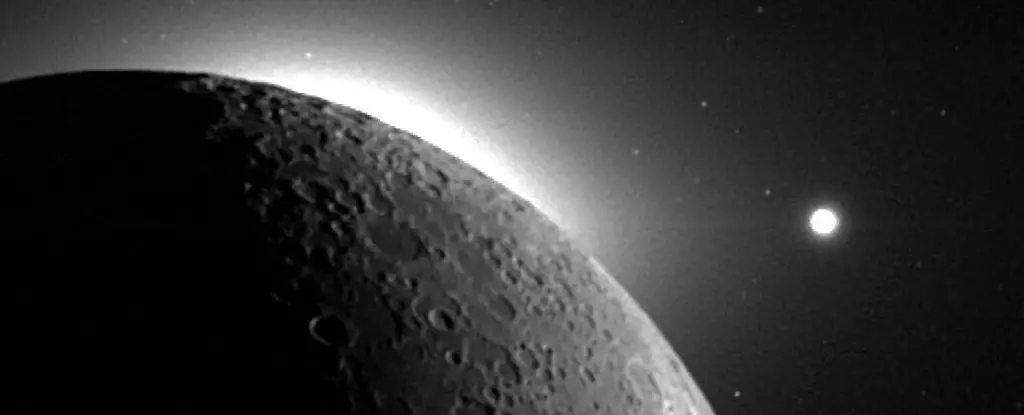The Earth-Moon system stands out as an exception in a solar neighborhood filled with a variety of astronomical relationships. Unlike other planets that may boast multiple moons or none at all, Earth hosts a surprisingly large satellite—the Moon. This dynamic duo presents significant questions surrounding the Moon’s origins. What if the Moon wasn’t merely a sibling born alongside Earth but an interloper? Recent research has introduced new possibilities that challenge longstanding theories and provides a fresh perspective on the formation of our unique planetary system.
For decades, scientists have favored the idea that the Moon and Earth share a common ancestry—an origin story rooted in the same material, arising from similar conditions in the early solar system. A popular theory, often referred to as the Giant Impact Hypothesis, suggests that a massive object collided with Earth, leading to the ejection of debris that later consolidated to form the Moon. This theory is supported by findings that show striking similarities in the mineral compositions of both celestial bodies.
However, the long-held narrative may not tell the whole story. Researchers Darren Williams and Michael Zugger from Pennsylvania State University offer a provocative alternative: the Moon could have been captured by Earth’s gravitational pull after developing elsewhere in the solar system. The implications of this research broaden our understanding of how moons can be acquired and lead to profound revelations about planetary formation overall.
Williams and Zugger’s research delves into the feasibility of this gravitational capture scenario, a notion previously deemed implausible when considering the Moon’s size relative to Earth. Yet, through astute mathematical modeling, they have demonstrated that Earth could indeed capture a body of significant size, even one comparable to Mars or Mercury. The shutters of speculation open wider as they suggest that, although stable orbits may be hard to maintain, an object as colossal as the Moon could indeed find its way into a more elliptical orbit with time, potentially stabilizing as it drifted farther away from Earth.
The mechanics they propose are rooted in a scenario known as binary capture, wherein gravitational interactions allow a third body to capture a member of a pre-existing binary pair. This phenomenon isn’t mere conjecture; several binaries have been observed in the outer solar system, enhancing credibility to this new model of origin.
One might wonder how the geological uniformity between Earth and the Moon aligns with this capture theory. Evidence suggests that the two bodies share isotopes and minerals, scientifically hinting at a closer relationship in their formation. While the capture theory introduces a paradigm shift in our understanding, the strong isotopic similarities raise questions about the viability of a capture-origin, given the physical laws governing the interaction between two celestial bodies.
Critics of the capture theory position the mineralogical data as a major obstacle to considering it a viable explanation. However, the dual theories—while seemingly at odds—may not be mutually exclusive. They could coexist as varied pathways in the complex evolution of celestial systems. By contemplating multiple models for Moon’s formation, we enrich our understanding and open new avenues for future research, with each theory offering a piece of the puzzle.
The dialogue spearheaded by Williams and Zugger could significantly impact fields beyond the initial assumptions about the Moon. Consider how these insights might extrapolate to the search for habitable planets orbiting foreign stars in the Milky Way. As we have come to appreciate how crucial the Moon is for life on Earth—affecting tides, stabilizing climates, and influencing biological conditions—understanding its origins could provide vital clues as we explore exoplanets.
By discovering how moons can form around other planets or how they might be captured, we illuminate the pathways that life may take in diverse environments throughout the universe. In essence, this scrutiny of the Earth-Moon system could serve as a springboard for identifying potentially habitable worlds elsewhere, thereby altering our paradigms surrounding life’s origins.
As the debate surrounding the Moon’s formation continues, the exciting prospect of gaining deeper insights into planetary evolution remains. Williams poignantly acknowledges an uncomfortable truth within the scientific community: “No one knows how the Moon was formed.” What was once a single narrative is now a dual theory that challenges our understanding while piquing curiosity and encouraging further exploration into the marvelous complexities of celestial dynamics. In this era of astronomical discovery, each layer peeled back invites more questions and research opportunities, highlighting the ongoing quest for knowledge in the celestial arena.


Leave a Reply